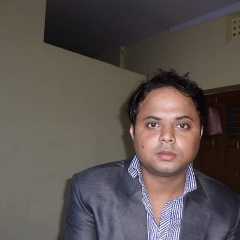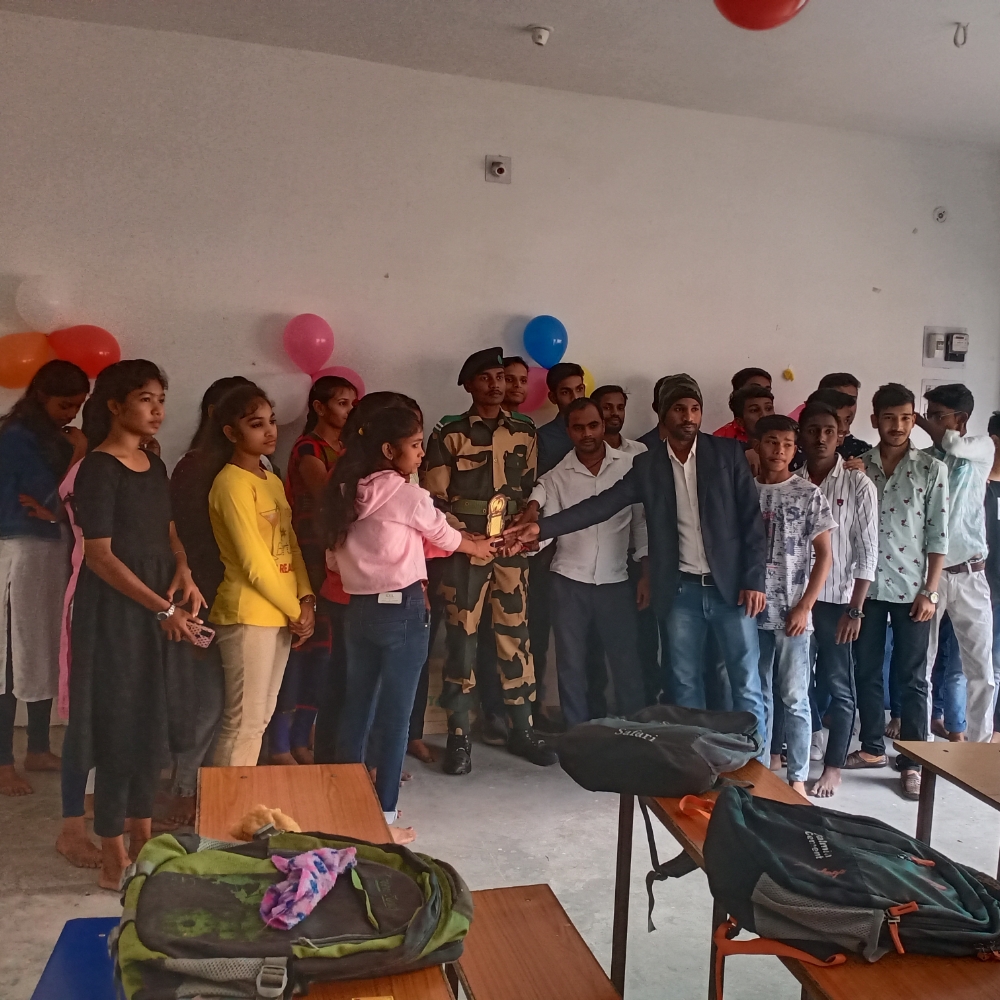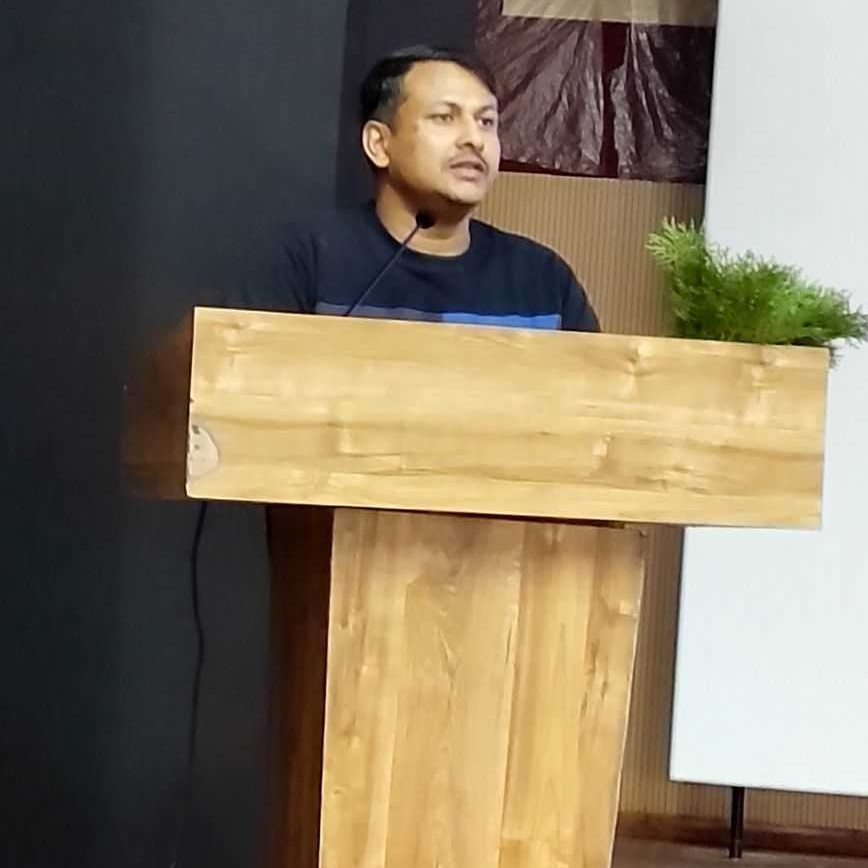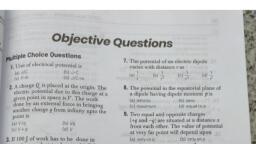Question 1 :
Two capacitors of $1\mu F$ and $2\mu F$ are connected in series and this combination is changed upto a potential difference of $120$ volt. What will be the potential difference across $1 \mu F$ capacitor:
Question 2 :
Four capacitors of equal capacitance have an equivalent capacitance ${ C }_{ 1 }$ when connected in series and an equivalent capacitance ${ C }_{ 2 }$ when connected in parallel. The ratio $\dfrac { { C }_{ 1 } }{ { C }_{ 2 } } $ is
Question 3 :
For capacitors in the series combination, the total capacitance C is given by<br/><br/>
Question 4 :
Find the total capacitance for three capacitors of $10$f,$15$f and $35$f in parallel with each other?
Question 5 :
Two capacitors of capacity $C_1$ and $C_2$ are connected in parallel, then the equivalent capacity is:
Question 6 :
<span class="wysiwyg-font-size-small"><span class="wysiwyg-font-size-small"><p class="wysiwyg-text-align-left">In a charged capacitor the energy is stored in<b>:</b></p><b><span class="wysiwyg-font-size-small"><span class="wysiwyg-font-size-small"></b>
Question 7 :
Two parallel-plate of capacitor have charges +Q and -Q and potential difference $\triangle V$ due to charging, Now the capacitor is disconnected then the potential difference and the stored electrical potential energy is:
Question 8 :
A potential difference of $\Delta V$exists between two plates of a parallel-plate capacitor with capacitance C . A dielectric with a dielectric constant of kis then placed between the plates of the capacitor. What is the energy stored in the capacitor?
Question 9 :
If the charge on the condenser of $10\mu F$ is doubled, then the energy stored in it becomes ____________.
Question 10 :
A capacitor having capacity of $2.0\mu F$ is charged to $200\ V$ and then the plates of the capacitors are connected to a resistance wire. The heat produced in joule will be :
Question 11 :
The capacity of a condenser is 20$\mu F$ $\displaystyle $ and the potential is 20 V. The energy released an discharging it fully will be
Question 12 :
A $2 \mu F$ capacitor is charged to $100 V$ and then its plates are connected by a conducting wire, the heat produced is :
Question 13 :
The energy stored in a capacitor of capacitance C having a charge Q under a potential $V$ is
Question 14 :
The amount of work done is increasing the voltage across the plates of a capacitor from $5V$ to $10V$ is $W$. The work done in increasing it from $10V$ to $15V$ will be :
Question 15 :
The potential energy of system of two equal negative point charges of $2\mu C$ each held 1 m apart in air is ($k = 9 \times 10^9\, SI \,unit$)
Question 16 :
The capacitance of a variable capacitor joined with the battery of $100$V is changed from $2\mu F$ to $10\mu F$. What is the change in the energy stored in it?
Question 17 :
The capacity of a condenser is $4 \times 10^{-6}$ farad and its potential is 100 volts. The energy released on discharging it fully will be
Question 18 :
The energy stored in a capacitor of capacitance $C$ having a charge $Q$ under a potential $V$ is
Question 19 :
A capacitor of capacity C$_{1}$ charged up to V volt and then connected to an uncharged capacitor C$_{2}$.Then final P.D. across each will be:
Question 20 :
$R=100\ k\Omega$ and $C=1\ \mu F$ are connected in a series with a $12\ volt$ battery. What is the maximum energy stored in the capacitor:
Question 21 :
A metallic sphere of radius $18cm$ has been given a charge of $5\times { 10 }^{ -6 }C$. The energy of the charged conductor is :
Question 22 :
A 16 pF capacitor is connected to 70 V supply. The amount of electric energy stored in the capacitor is:
Question 23 :
If a capacitor having capacitance of $1200\mu F$ is charged at a uniform rate of $100\mu C/s$, what is the time required to increase its potential by $20$ volts?
Question 24 :
A parallel plate capacitor of $1\mu F$ capacity is discharging through a resister. If its energy reduces to half in one second. The value of resistance will be?
Question 25 :
<span class="wysiwyg-font-size-small"><span class="wysiwyg-font-size-small"><p class="wysiwyg-text-align-left">The energy stored in a sphere of $10$ cm radius when the sphere is charged to a potential difference of $300$ V is</p>
Question 26 :
<span class="wysiwyg-font-size-small"><span class="wysiwyg-font-size-small"><p class="wysiwyg-text-align-left">Three charges $-q, Q, -q$ are placed at equal distance on a straight line. If the total potential energy of the system is zero, then $ Q:q $ is:</p>
Question 27 :
Two capacitors when connected in series have a capacitance of $3\mu F$, and when connected in parallel have a capacitance of $16\mu F$. Their individual capacities are :<br/>
Question 28 :
<span class="wysiwyg-font-size-small"><span class="wysiwyg-font-size-small"><p class="wysiwyg-text-align-left">An insulated charged conducting sphere of radius $5cm$ has a potential of $10V$ at the surface. What is the potential at centre?</p>
Question 29 :
A conducting sphere of radius R is given a charge Q. The electric potential and the electric field at the centreof the sphere respectively are :
Question 30 :
What is the angle between electric field and equipotential surfaces ?
Question 31 :
A parallel plate capacitor has area $20 cm^2$ and separation between the plates is $0.1 mm$. The dielectric break down strength is $\displaystyle 3\times 10^6$ <br> $v/m$. The maximum r.m.s voltage which can be safely applied is :<br/>
Question 32 :
The electric field at a distance $\displaystyle \dfrac{3R}{2}$ from the centre of a charged conducting spherical shell of radius R is E. The electric field at a distance $\displaystyle \dfrac{R}{2}$ from the centre of the sphere is :
Question 33 :
In a parallel plate capacitor, the distance between the plates is d & potential difference across plates is V. Energy stored per unit volume between the plates of capacitor is :<br/>
Question 34 :
A parallel plate air condenser has capacity of $20\mu F$. If the distance between two plates is doubled, then new capacity will be ________.
Question 35 :
A variable air capacitor has $11$ movable plates and $12$ stationary plates, The area of each plate is $0.0015\ m^{2}$ and separation between opposite plates is $0.001\ m$. The maximum capacitance of the capacitor is
Question 36 :
Assertion: If a conductor is given charge then no excess inner charge appears.
Reason: Electric field inside conductor is zero.
Question 37 :
Assertion: A parallel plate capacitor isconnected across battery through a key. Adielectric slab of dielectric constant K isintroduced between the plates. The energy whichis storedbecomes K times.<br>Reason: The surface density of charge on theplate remains constant or unchanged.
Question 38 :
Assertion: Dielectric polarisation means formation of positive and negative charges inside the dielectric.
Reason: Free electron are formed in this process.
Question 39 :
<span class="wysiwyg-font-size-small"><span class="wysiwyg-font-size-small"><p class="wysiwyg-text-align-left">When two capacitors are joined in series the <span class="wysiwyg-font-size-small"><span class="wysiwyg-font-size-small">resultant capacity is $2.4 \mu F$<i><span class="wysiwyg-font-size-medium"><span class="wysiwyg-font-size-medium"> </i><span class="wysiwyg-font-size-small"><span class="wysiwyg-font-size-small">and when the same two are joined in parallel the resultant capacity is $10 \mu F$. Their individual capacities are :</p>
Question 40 :
An electron of mass $M_e$, initially at rest, moves through a certain distance in a uniform electric field in time $t_1$. A proton of mass $M_p$ also intially at rest, takes time $t_2$ to move through an equal distance in this uniform electric field. Neglecting the effect of gravity, the ratio $t_2 / t_1$ is nearly equal to :
Question 41 :
A dielectric slab is inserted between the plates of a capacitor. The charge on the capacitor is Q and the magnitude of the induced charge on each surface of the dielectric is Q'.
Question 42 :
In electroplating, the metal to be used for coating is made the<br>
Question 43 :
Assertion: A polarised atom can be approximated as a dipole.
Reason: Electric field induces the charge separation in the atom.
Question 44 :
The potential difference between the two plates of a parallel plate capacitor is constant. When air between the plates is replaced by dielectric material, the electric field intensity :<br/>
Question 45 :
A plane electromagnetic wave in a non magnetic dielectric medium is given by $\bar{E} = \bar{E_0} ( 4 \times 10^{-7} \times - 50 t)$ with distance being in meter and time in seconds. The dielectric constant of the medium is:
Question 46 :
Two charges of magnitude $5nC$ and $-2nC$, one placed at points $\left( 2cm,0,0 \right) $ and $\left( x cm,0,0 \right) $ in a region of space, where there is no other external field. If the electrostatic potential energy of the system is $-0.5\mu J$. The value of $x$ is :
Question 47 :
A capacitor of capacitance $C_1 = 1\mu F$ withstand the maximum voltage $V_1 = 6.0 kV$ while the capacitor of capacitance $C_2 = 2\mu F$, the maximum voltage $V_2 = 4.0 kV$. What voltage in Kilo Volt will the system of these two capacitors withstand if they are connected in series?
Question 48 :
Three point charges $Q,4Q$ and $16Q$ are placed on a straight line $9cm$ long. Charges are placed in such a way that the system has minimum potential energy. Then<br>
Question 49 :
In a regular polygon of n sides, each corner is at a distance r from the centre. Identical charges are placed at (n-1) corners. At the centre, the magnitude of intensity is E and the potential is V.The ratio V/E is
Question 50 :
The potential across a 25.0 microfarad capacitor is 5.0 V. What is the charge on the capacitor?
Question 51 :
A parallel plate condenser has two circular metal plates of radius 15 cm. It is being charged so that electric field in the gap between its plates rises steadily at the rate of $10^12V/ms.$ what is the displacement current?
Question 52 :
A capacitor is charged by a cell of emf $E$ and the charging battery is then removed. If an identical capacitor is now inserted in the circuit in parallel with the previous capacitor, the potential difference across the new capacitor is :<br/>
Question 53 :
Two capacitors connected in parallel having the capacities $C_1$ and $C_2$ are given $'q'$ charge, which is distributed among them. The ratio of the charge on $C_1$ and $C_2$ will be :
Question 54 :
Three capacitance of capacity $10 \mu F , 5 \mu F $ are connected in parallel. The total capacity will be :
Question 55 :
A parallel plate capacitor has $91$ plates, all are identical and arranged with same spacing between them. If the capacitance between adjacent plates is $3\ pF$. What will be the resultant capacitance?
Question 56 :
The work done in placing a charge of $8\times  10^{-18} C$ on a condenser of capacity $100\mu F$ is :<br/>
Question 57 :
A parallel plate capacitor is charged and then the battery is disconnected, When the plates of the capacitor are brought closer, then<br>
Question 58 :
A parallel plate capacitor is charged from a cell and then isolated from it. The separation between the plates is now increased :<br/>
Question 59 :
A parallel plate condenser with a dielectric of dielectric constant $K$ between the plates has a capacity $C$ and is charged to a potential $V$ volt. The dielectric slab is slowly removed from between the plates and then reinserted. The net work done by the system in this process is :<br>
Question 60 :
A parallel plate air capacitor has a initial capacitance $C$. If plate separation is slowly increased from ${d}_{1}$ to ${d}_{2}$, then mark the correct statement(s). (Take potential of the capacitor to be constant, i.e., throughout the process it remains connected to battery.)<br>
Question 61 :
A parallel plate capacitor is charged and then disconnected from the charging battery. If the plates are now moved farther apart by pulling at them by means of insulating handles, then:
Question 62 :
A fully charged capacitor has a capacitance $C$. It is discharged through a small coil of resistance wire, embedded in a block of specific heat $s$ and mass $m$ under thermally isolated conditions. If the temperature of the block is raised by $\displaystyle \Delta T$, the potential difference $V$ across the capacitor initially is:
Question 63 :
The energy of a parallel plate capacitor when connected to a battery is $E$. With the battery still in connection, if the plates of the capacitor are separated so that the distance between them is twice the original distance, then electrostatic energy becomes :<br/>
Question 64 :
A fully charged capacitor has a capacitance '$C$'. It is discharged through a small coil of resistance wire embedded in a thermally insulated block of specific heat capacity '$s$' and mass '$m$'. If the temperature of the block is raised $'\Delta T'$, the potential difference '$V$' across the capacitance is :<br/>
Question 65 :
A fully charged capacitors has a capacitance $'C'$. It is discharged through a small coil of resistance wire embedded in a thermally insulated block of specific heat capacity $s$ and mass $m$. If the temperature of the block is raised by $\Delta T$, the potential difference $V$ across the capacitor is :<br/>
Question 66 :
A parallel-plate vacuum capacitor with plate area $A$ and separation $x$ has charges $+Q$ and $-Q$ on its plates. The capacitor is disconnected from the source of charge, so the charge on each plate remains fixed. What is the total energy stored in the capacitor?<br/>
Question 67 :
A$\displaystyle 40\mu F$capacitor in a defibrillator is charged to $3000 V$.The energy stored in the capacitor is setthrough the patient during a pulse of duration $2ms$, The power delivered to the patient is :
Question 68 :
The energy required to charge a parallel plate condenser of plate separation d and plate area of cross-section A such that the uniform electric field between the plates is E, is :<br/>
Question 69 :
A parallel plate capacitor without any dielectric within its plates, has a capacitance C, and is connected to a battery of emf V. The battery is disconnected and the plates of the capacitor are pulled apart until the separation between the plates is doubled. What is the work done by the agent pulling the plates apart, in this process?
Question 70 :
Three capacitors of same capacitance are connected in parallel When they are connected to a cell of $2$ volt, total charge of $1.8 \mu C$ is accumulated on them. Now after discharging they are connected m series and then charged by the same cell The total charge stored in them will be:
Question 71 :
Two condensers of capacity $0.3 \mu F$ and $0.6 \mu F$ respectively are connected in series. The combination is connected across a potential of $6$ volts. The ratio of energies stored by the condensers will be:
Question 73 :
<span class="wysiwyg-font-size-small"><span class="wysiwyg-font-size-small"><p class="wysiwyg-text-align-left">A parallel plate capacitor has area of each plate A, the separation between the plates is d. It is charged to a potential V and then disconnected from the battery. The amount of work done in filling the capacitor completely with a dielectric constant k is :<br/></p>























